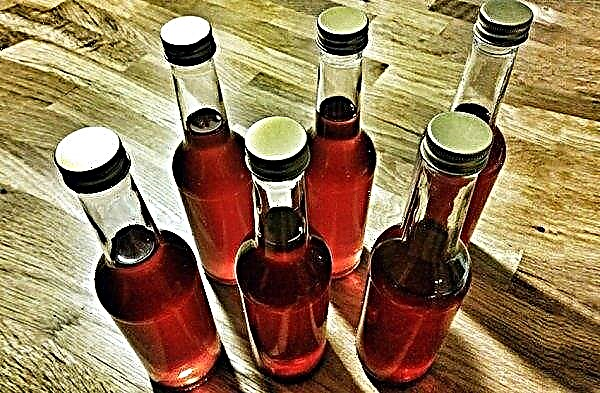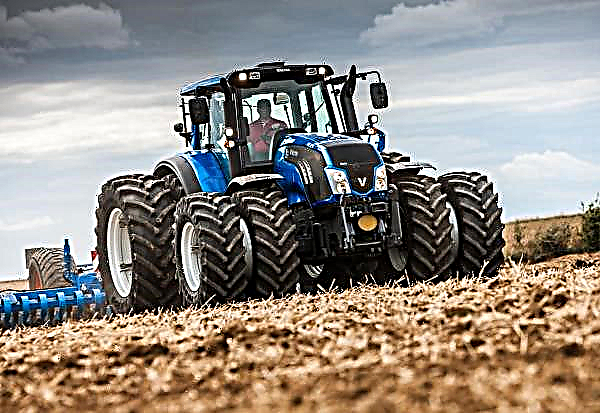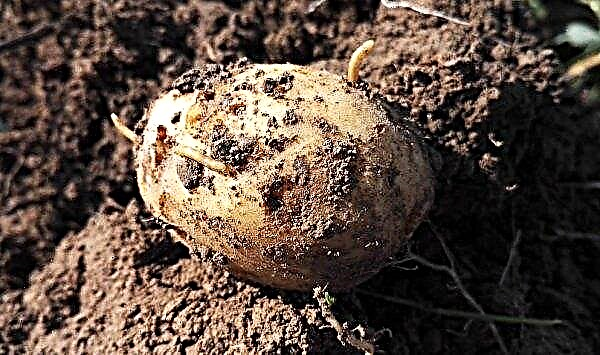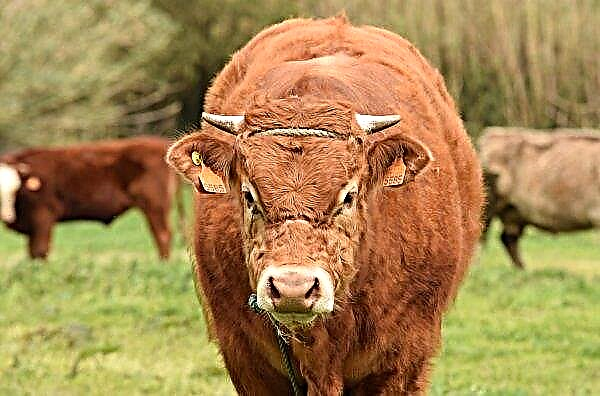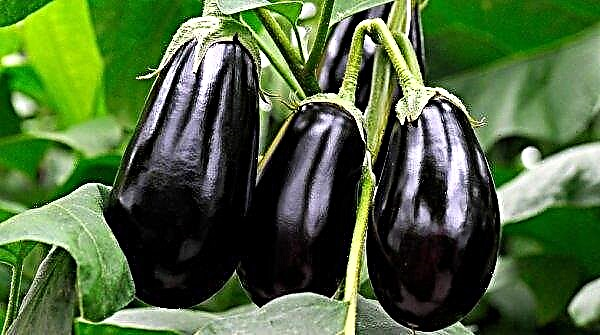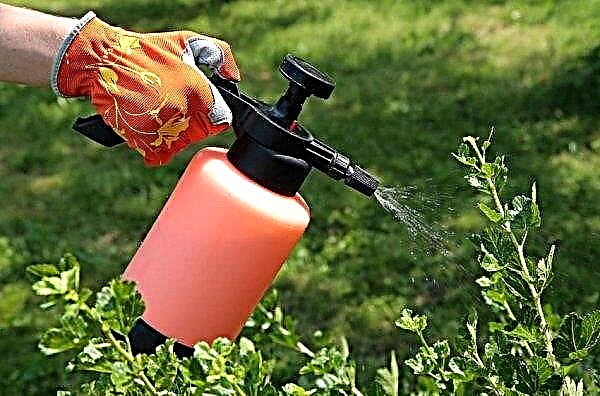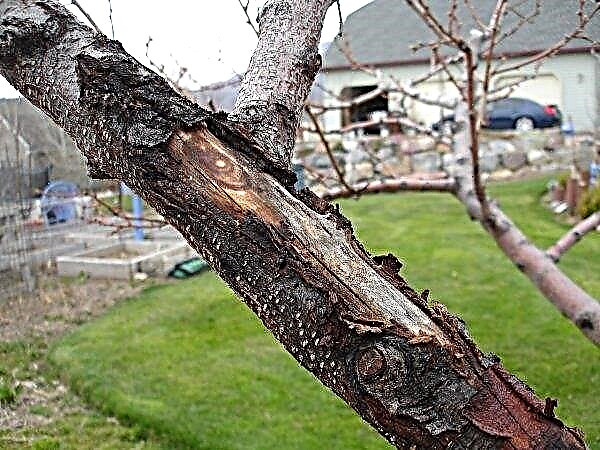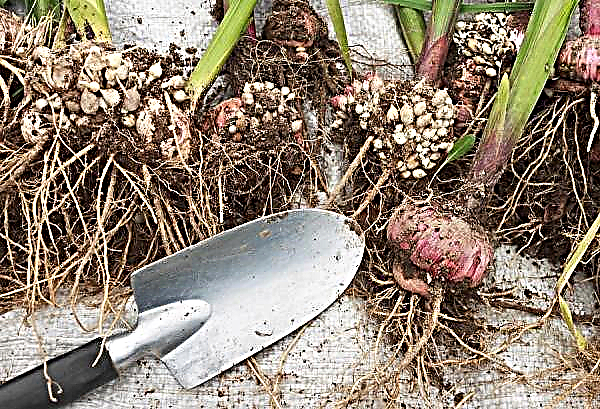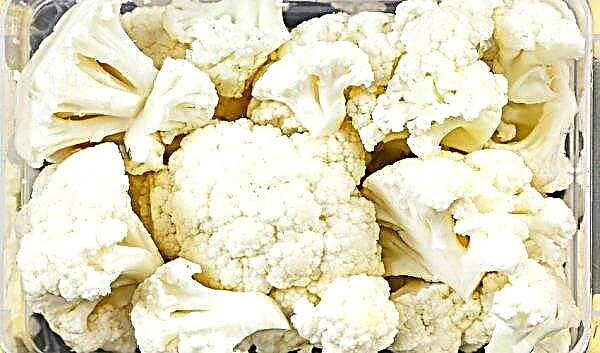Evergreens are especially relevant in winter, when there is so lack of bright colors. And myrtle is one of the brightest plants of this cold period. About what varieties of myrtle are grown indoors, about their features and care for them, we will discuss this review.
Types and varieties of myrtle
An evergreen tree with delicate dark green fragrant leaves and delicate white flowers appearing in spring is myrtle. In the wild, the plant is found in dry, warm areas of Southern Europe and Western Asia. Botanists distinguish a separate genus of myrtle in the myrtle family. It has about 600 individual plants.
In floriculture, you must have come across the names:
- Myrtus communis - ordinary myrtle, which came from the Mediterranean;
- Myrtus nivelii - Sahara myrtle, a native of North Africa;
- Myrtus variegata - Mediterranean variegate myrtle, growing in the Caucasus, in the Crimea and on the Black Sea coast;
- Myrtus boetica - large-leaved myrtle - a variety of ordinary; its leaves are 2 times larger (6 cm) than other species (2-3 cm) and have a narrower end of the leaf plate;
- Myrtus alhambra - Alhambra, a Mediterranean shrub;
- Myrtus tarentina - Tarentina, a Mediterranean dwarf variety of myrtle with smaller leaves;
- Myrtus lemon - lemon, native of the rainforests of Australia;
- Myrtus microphylla - small-leaved myrtle, also a variety of ordinary.
Did you know? In ancient times, the juice from the berries of myrtle was used as ink. A stain from this juice is almost impossible to remove. Therefore, in the past it was used as a natural black dye.
Myrtle ordinary
Myrtus communis is a medium-sized evergreen shrub with small fragrant ovoid leaves. It blooms with abundant white flowers 2 cm wide. It forms small purple-black berries. Many consider it very attractive because of its pleasant aroma, delicate spring flowers and berries. Outdoor cultivation is possible in moist, but well-drained soil, with shelter from the cold northerly winds. In a room, conservatory or conservatory grows in soil on the basis of loam with "spotty light" and good ventilation. In order for flowers and berries to appear, ordinary myrtle needs a hot and long summer.
Key facts:
- height: from 1.5 to 2.5 m;
- width: from 1.5 to 2.5 m;
- conditions for growth: prefers bright lighting, but so that direct sunlight does not fall on it; it is advisable to use windows facing the south or west side;
- soil: moist, but with good drainage; the composition of the soil may be chalk, sand, clay, loam;
- soil acidity: does not matter;
- foliage: evergreen;
- flowering: from June to October.
Variegate Myrtle
Myrtus variegata - is a medium-sized evergreen shrub with small fragrant dark green leaves with a neat cream trim. From mid-late summer to autumn, fragrant white flowers appear 2 cm wide, followed by purple-black berries. Suitable for decorating flower borders and flower beds.
Did you know? From myrtle berries make excellent jam. But if you do not have many berries, just add them to apple jam. Amaze your friends and family with the amazing taste of myrtle jam.
Key facts:
- synonymous name: tricolor;
- height: from 1.5 to 2.5 m;
- width: from 1.5 to 2.5 m;
- conditions for growth: prefers bright sun, windows facing the south or west side;
- soil: moist, but with good drainage; the composition of the soil may be chalk, sand, clay, loam;
- soil acidity: does not matter;
- foliage: evergreen;
- flowering: from July to September.

Leafy Myrtle
Myrtus communis (boetica) - is a Mediterranean evergreen shrub or small tree, depending on the variety. It is characterized by elliptical ovoid leaves with a delicate aroma. The length of the leaf plate is up to 5 cm. It is extremely drought-resistant and does not depend on watering. Excessive watering causes its leaves to lose color. Large-leaved myrtle fructifies with blue berries with a diameter of 0.7 to 1.2 cm. They are edible, but have not the best taste.
Key facts:
- height: from 1.5 to 4.5 m;
- conditions for growth: prefers a bright sun with a variable shadow;
- soil: any, drained;
- soil acidity: does not matter;
- foliage: evergreen;
- flowering: from July to September.

Myrtle Alhambra
The Alhambra is one of the largest European medieval palace complexes, preserved to this day. Initially, it was a fortress, and then several palaces and magnificent gardens were added to it. Myrtle, growing in them, is a type of common myrtle. The fragrant shrub of the myrtle family was well known to the Greeks and Romans. Roman naturalist Pliny the Elder was the first to describe the wild myrtle, cultivated large-leaved (hexasticham) and small-leaved forms (tarentina).
In 1564, the Flemish naturalist Karolus Klusius noted that the plant growing in the gardens of the Alhambra differs from the species described by Pliny and proposed a separate name for it - Myrtus baetica or Moorish myrtle. Over time, it was superseded by a subspecies of tarentine because of the greater decorativeness and beauty of the narrow leaves of the latter. And it’s exactly the tarantine that you get in stores called Myrtle Alhambra. In 2012, several bushes of the original Moorish species were discovered in the gardens of the Alhambra.
Did you know? In the Middle Ages, water with tincture of myrtle flowers was used as a refreshing facial tonic. Such water is used today in cosmetology.
It has larger and denser leaves and its origin has been proven by scientific methods. But these bushes are not yet sold in stores. Myrtus alhambra is characterized by an irregularly curved shape that attracts landscape designers. It is grown in the form of a bush or tree. Ideal for creating beautiful bonsai designs. Perfectly adapted to dry conditions. It has glossy dark green leaves and white flowers in the shape of stars.
Key facts:
- height: from 2.5 to 4.5 m;
- conditions for growth: bright lighting; tolerates cold up to –7 ° С;
- soil: any, well-drained;
- foliage: evergreen;
- flowering: from June to September.
Mirt Tarentina
Myrtus communis (tarentina) is a small Mediterranean evergreen shrub with small, narrow-ovate leaves. Flowers are pale pink, turning into white. Forms berries up to 12 mm long. It grows well on most moderately fertile soils. Needs shelter from cold and withering winds. Suitable for decorating borders and flower beds.
Key facts:
- synonymous name: Jenny Reitenbach, Microfilla;
- height: from 1 to 1.5 m;
- width: from 1 to 1.5 m;
- conditions for growth: good bright lighting, without direct sunlight; east or south windows;
- soil: moist, well-drained;
- soil acidity: any;
- foliage: evergreen;
- flowering: from June to October.

Lemon Myrtle
Myrtus lemon is an Australian large shrub or small tree that came to Europe at the end of the twentieth century. It is a type of ordinary. It is characterized by long narrow leaves and lemon aroma. The natural habitat is the rainforest. Therefore, lemon myrtle needs a warm and humid climate.
Did you know? Myrtle honey is extremely rare and expensive. Because the flower of this plant is devoid of nectar, which means — It is present only in flower honey, as a component of pollen. But Australian honey with Myrtus lemon has earned its high reputation. It has the most powerful antibacterial properties among all types of honey in the world.
Key facts:
- height: from 1 to 10 m;
- conditions for growth: prefers a bright sun with a variable shadow;
- soil: moist, well-drained;
- soil acidity: does not matter;
- foliage: evergreen.

Myrtle small-leaved
Myrtus microphylla is a species of common myrtle, with dense foliage and pointed-oval smaller than ordinary leaves. This species may be an evergreen shrub or a small tree. Microfilla flowers consist of a mass of yellow stamens, under which there are five small, white or pale pink petals.
Key facts:
- height: from 2 to 4.5 m;
- growth conditions: sunny or partially sunny areas;
- soil: ordinary with any composition: sandy, clayey and others;
- soil acidity: any;
- foliage: evergreen;
- flowering: from June to September.

Myrtle breeding features
Common myrtle is easily propagated by preparing cuttings from healthy branches. This method is considered the easiest and most convenient.
Cuttings
For propagation, cuttings with a short heel (that is, with a small part of the old bark) are used. Rooting can take from 6 to 8 weeks. To do this, you will need a container and soil for planting. It can be a mixture of peat and river sand. Cuttings are harvested in spring or mid-summer.
Planting by cuttings:
- Cut stems up to 15 cm long.
- Remove the lower leaves so that only 1–2 upper pairs remain.
- Pour a mixture of sand and peat into the container.
- Moisten the soil mixture.
- Insert a few cuttings along the rim of the container.
- Compact the soil at the cuttings.
- Cover the container with plastic wrap.
- Install in a not too sunny place at a temperature of about + 15 ° C.
- Check and moisten the soil periodically.
- When a new upper growth appears, move each rooted stem into an individual 8 cm diameter pot with a pot mix for adult plants.

Seeds
After the myrtle fades, seed bolls are formed. They can persist until the end of autumn. If you want to propagate the plant with seeds, then collect them before the first frost.
Important! Seeds collected from myrtle may not form the mother plant when they begin to grow, as most modern varieties — these are hybrids. And they are best propagated by cuttings.
Propagation of myrtle seeds:
- Collect the seed boxes. If they open, shake the seeds in a paper bag. If not, put a twig with a seed box in a vase of water. A few days later it will open.
- Collect the seeds and keep them in a dry and cool place until planting. Their coating is very thin, so be careful not to damage it.
- Seeds can be planted at any time of the year, but better in spring. At this time, begins the natural vegetation cycle of myrtle.
- For planting, any soil for indoor plants is prepared.
- Moisten the soil and push the seeds into it.
- Cover them with a small layer of soil or moss.
- Close the container with plastic wrap and place in a warm, bright place with a temperature of +24 ... + 29 ° С.
- Seeds will germinate for several weeks. After emergence, the film is removed from the container.
- Place the seedlings on the windowsill with bright lighting. When 2 pairs of real leaves are formed on them, they are transplanted into individual pots with a mixture for adult plants.
- Pots should be indoors until May. As soon as the night temperature on the street is not lower than + 20 ° С, they are transferred to a shady place on the open terrace for acclimatization.
- In a few weeks they will be ready for planting at permanent places in your garden.

Myrtle Care at Home
Myrtle care consists of:
- maintaining an optimal microclimate (lighting, temperature, humidity);
- glaze;
- trimming
- fertilizer application.
Did you know? The Most Important Myrtle Product — it's myrtle, liquor. Its composition: 1 kg of fresh berries per 1 liter of alcohol. Berries insist with the addition of water, sugar, honey. The exposure time, the number and composition of the components are jealously guarded and transmitted in Corsican communities only verbally for many centuries.
Location and lighting
Place the plant in a sunny area. Lighting should be as bright as possible. But a partial presence of sun and shading is allowed - "spotted lighting." Most varieties tolerate drought and heat well, but badly - the cold wind in winter. Therefore, the landing site must be protected from the wind. It can be buildings or other trees located on the north side.
Temperature
The plant can grow in cool conditions, but prefers a normal air temperature of +21 ... + 25 ° C. Warm and dry air leads to leaf falling. Draft negatively affects growth. Therefore, the plant must be placed taking into account these factors.
Air humidity
There are no special requirements for humidity in the plant. It can be the same as in the room - 60–70%. Humidity problems in some plants appear in winter. Running heaters make the air excessively dry. This causes the myrtle to drop its leaves. The situation can be improved by placing a pot with it in a pan filled with wet pebbles. Vapors will increase humidity around the plant.
Important! Myrtle, which has endured the “dry” conditions of wintering with low humidity, will green in the spring, but most likely will not bloom.
Watering
During the period of active growth, in the first 2 years, it needs regular watering. Between waterings, an earthen lump should dry no more than 2 cm. Watering should be moderate so that the soil is moistened, but not swamped. A feature of water in the highways is the presence of chlorine. It is not a natural component of rainwater and is harmful to plants. Therefore, if water filters are not installed in the system, it must be defended for a day before irrigation. This will allow chlorine to escape. Some gardeners also use rainwater for irrigation.
It is not a natural component of rainwater and is harmful to plants. Therefore, if water filters are not installed in the system, it must be defended for a day before irrigation. This will allow chlorine to escape. Some gardeners also use rainwater for irrigation.
Fertilizers and fertilizers
Until the plants are planted in permanent pots they are not fed. Then, standard fertilizers are applied to the myrtle every 2 weeks during the growing season. For garden varieties, fertilizers are applied in early spring, immediately before the start of active growth. The composition is quite sufficient: 10–10–10 (nitrogen, phosphorus, potassium in%). Dosage - 1 tbsp. spoon on 1 m² of soil.
Pruning and pinching
An annual haircut helps keep fit while stimulating lush growth. Pruning is carried out in the fall after the bush has flowered or in the middle of summer. This avoids premature discarding of the color, as the cutting is stressful for the plant.
Did you know? The ancient Greeks decorated myrtle wreaths with the heads of Olympic winners.
Trimming:
- Prepare a clean pruner. It can be wiped with a solution of whiteness with water or alcohol. Such a preventive measure will allow you to limit the spread of spores of fungi or bacteria if they came to the instrument from diseased plants.
- First remove all broken, deformed and dry branches.
- Decide on the form. Trimming the tops gives the plant a bush shape. And pruning of the side branches forms a tree with a lush crown. In this case, the lateral growth is cut off by no more than 1/3, and the apex is not more than 1/4.

Possible growing difficulties
Myrtle infrequently affected by pests or diseases.
Among the main diseases of myrtle:
- Powdery mildew - a disease of fungal nature. It appears in the form of whitish spots on leaves, flowers and shoots. Infected plants stop growing. The disease affects the bushes if they are in an area with dense shade and high humidity. The peak incidence occurs in spring and autumn. The most effective prevention is not to plant myrtle in unsuitable areas. For treatment, fungicides based on myclobutanil, thiophanate methyl or copper are used.
- Leaf spotting causes fungus Cercospora lythracearum. The conditions for its development are warm and humid weather. May lead to complete leaf fall.Prevention measures: ensure good air circulation and avoid plant thickening. For treatment, the same fungicides are suitable as for the treatment of powdery mildew.
Myrtle insects have few insects. All of them are sucking and are found on branches or flowers.
The main pests of myrtle:
- Aphids - small insects of different colors. The most common greens. They feed on the juice of plants. They live in populations on young branches. They are dangerous not only because they damage plant tissues, but also because soot fungi settle on the honeydew that aphids secrete. Aphids are removed from plants by a strong stream of water (outdoors) or by spraying with soapy water in the room. Processing is carried out several times.

- Japanese beetle or japanese beetle - these are beetles up to 0.5 cm in size of copper-brown color with a green head. They feed on sheet tissue. They can be assembled manually. Soil irrigation with imidacloprid is used against grubs of larvae.




